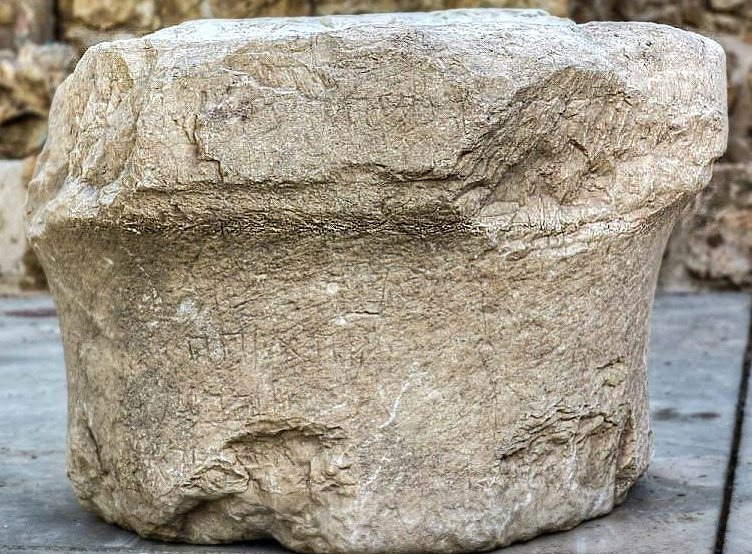Life Of Galilean Sages Described On 1,800-Year-Old Hebrew Inscriptions Can Confirm Ancient Legends
AncientPages.com - Two inscription of great historical importance have been found in the Western Galilee town of Peqi’in in Israel.
The 1,800-year-old inscriptions were found in in the courtyard of an ancient synagogue. Archaeologists and historians find the text highly significant because it tells about the lives of two Galilean sages.
One of the sages was Rabbi Shimon Bar-Yochai, author of The Book of Zohar (The Book of Radiance). It is believed that in the second century CE, a single man was granted the spiritual knowledge that Kabbalists had accumulated for 3,000 years before his time. Also known as Rashbi, he was active after the destruction of the Second Temple in 70 C.E.
Rashbi was born and raised in the Galilee, a mountainous region in today’s Northern Israel. Even as a child, he was not like other children his age. Questions such as, “What is the purpose of my life?” “Who am I?” and “How is the world built?” plagued him and demanded answers.
In those days, life in Galilee was very harsh because the Romans persecuted Jews and continually invented new laws to make their lives more difficult.
Ancient legends tell that Rashbi and his son fled to the Galilee, hid in a cave at Peqi’in, a village in the north of Israel, and remained there for thirteen years. During that time, they delved in the secrets of the wisdom of the hidden. Their efforts succeeded, and they discovered the entire system of creation.
The discovered ancient inscriptions could perhaps confirm the legends.
“The Talmudic and Midrashic sources tell of the Galilean sages that lived in Peqi’in, including Rabbi Shimon Bar Yochai, who hid from the Romans in a cave,” IAA inspector in the Western Galilee Yoav Lerer said.
“However, there are those who disagree with the identification of the location of Peqi’in. I believe that these inscriptions will add an important tier to our knowledge about the Jewish settlement in the village of Peqi’in during the Roman and Byzantine periods.”
According to Ze’ev Elkin, Israeli Minister of Jerusalem Affairs and Heritage, Peqiʽin “is one of the most significant sites in the Galilee and is a place where there has always been a Jewish presence,” as cited by The Algemeiner.
This is one of the reasons why Restoration work has been underway for the past year at Peqi’in’s ancient synagogue, and at the nearby visitor center in Beit Zinati, which will together tell the story of the Jewish presence in the town over the last 2,000 years.
The site will also focus on the history of the Zinatis, the town’s oldest Jewish family, whose last surviving member — Margalit Zinati — still resides in a house next door to the synagogue.
Ancient Pages
More From Ancient Pages
-
 Little People: Ancient Race That Pre-Dates Native Americans, Celts, And Other Settlers Worldwide
Featured Stories | Aug 29, 2024
Little People: Ancient Race That Pre-Dates Native Americans, Celts, And Other Settlers Worldwide
Featured Stories | Aug 29, 2024 -
 New Genes May Explain Why Humans Got Such Big Brains
Archaeology | Jun 2, 2018
New Genes May Explain Why Humans Got Such Big Brains
Archaeology | Jun 2, 2018 -
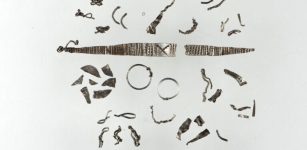 Magnificent Viking Treasure Accidently Found In Norway – Was It Hidden Or Sacrificed?
Archaeology | Nov 3, 2022
Magnificent Viking Treasure Accidently Found In Norway – Was It Hidden Or Sacrificed?
Archaeology | Nov 3, 2022 -
 Hina Matsuri Festival – Sending Dolls In Boats Into The Ocean To Celebrate Girl’s Day In Japan – Ancient Shinto Tradition
Ancient Traditions And Customs | Apr 29, 2019
Hina Matsuri Festival – Sending Dolls In Boats Into The Ocean To Celebrate Girl’s Day In Japan – Ancient Shinto Tradition
Ancient Traditions And Customs | Apr 29, 2019 -
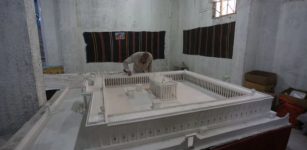 Memory Of Palmyra’s Ancient Ruins Preserved Thanks To One Man’s Dedication And Mini Models Of Lost Temples
Archaeology | Mar 24, 2021
Memory Of Palmyra’s Ancient Ruins Preserved Thanks To One Man’s Dedication And Mini Models Of Lost Temples
Archaeology | Mar 24, 2021 -
 Mysterious High-Energy Particles Detected In Antarctica – Evidence Of Ancient Nuclear Technology Or Something More Frightening?
Featured Stories | Sep 11, 2019
Mysterious High-Energy Particles Detected In Antarctica – Evidence Of Ancient Nuclear Technology Or Something More Frightening?
Featured Stories | Sep 11, 2019 -
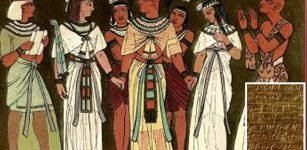 Asenath And The Golden Tablet That Changed Her Destiny
Biblical Mysteries | May 10, 2019
Asenath And The Golden Tablet That Changed Her Destiny
Biblical Mysteries | May 10, 2019 -
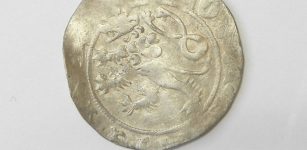 Remarkable Archaeological Discoveries Made Near Bratislava, Slovakia
Archaeology | Oct 28, 2023
Remarkable Archaeological Discoveries Made Near Bratislava, Slovakia
Archaeology | Oct 28, 2023 -
 Is The Intriguing Underwater Structure Beneath Lake Michigan Man-Made Or A Natural Formation?
Featured Stories | Dec 7, 2023
Is The Intriguing Underwater Structure Beneath Lake Michigan Man-Made Or A Natural Formation?
Featured Stories | Dec 7, 2023 -
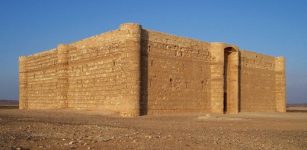 Strange Desert Castle Qasr Kharana In Jordan
Featured Stories | Oct 1, 2019
Strange Desert Castle Qasr Kharana In Jordan
Featured Stories | Oct 1, 2019 -
 Medieval Music Wasn’t Only Supposed To Be Beautiful To Listen To – A New Study Suggests
Archaeology | Jun 8, 2023
Medieval Music Wasn’t Only Supposed To Be Beautiful To Listen To – A New Study Suggests
Archaeology | Jun 8, 2023 -
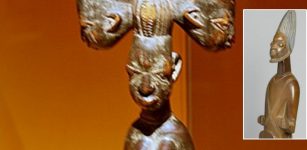 Shango: Powerful Thunder God And Symbol Of Kingship Among Yoruba People Of West Africa
African Mythology | Mar 4, 2019
Shango: Powerful Thunder God And Symbol Of Kingship Among Yoruba People Of West Africa
African Mythology | Mar 4, 2019 -
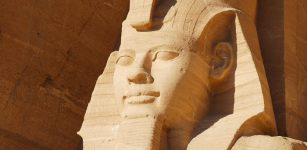 How Ramesses II Became The Greatest Pharaoh In Egypt
Featured Stories | Jun 6, 2021
How Ramesses II Became The Greatest Pharaoh In Egypt
Featured Stories | Jun 6, 2021 -
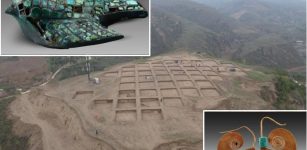 Fortified Bronze Age City Filled With Magnificent Ancient Treasures Solves A Mystery In China
Archaeology | Nov 21, 2023
Fortified Bronze Age City Filled With Magnificent Ancient Treasures Solves A Mystery In China
Archaeology | Nov 21, 2023 -
 Enigma Of The Missing Pyramid Bodies – Ancient Egyptian Mystery Remains Unsolved
Civilizations | Dec 10, 2018
Enigma Of The Missing Pyramid Bodies – Ancient Egyptian Mystery Remains Unsolved
Civilizations | Dec 10, 2018 -
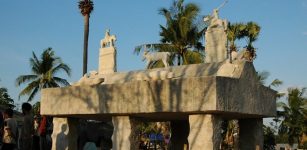 Thousands Of Remarkable Megaliths On The Sumba Island
Featured Stories | Aug 30, 2017
Thousands Of Remarkable Megaliths On The Sumba Island
Featured Stories | Aug 30, 2017 -
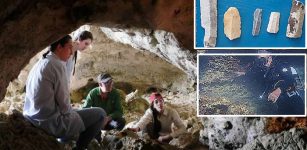 Early Expansion Of Homo sapiens: Underwater Caves Give New Clues About Sicily’s First Residents
Underwater Discoveries | Oct 15, 2024
Early Expansion Of Homo sapiens: Underwater Caves Give New Clues About Sicily’s First Residents
Underwater Discoveries | Oct 15, 2024 -
 Mysterious Disappearance Of Explorer Peng Jiamu In Lop Nur – The Wandering Lake
Featured Stories | Dec 20, 2018
Mysterious Disappearance Of Explorer Peng Jiamu In Lop Nur – The Wandering Lake
Featured Stories | Dec 20, 2018 -
 Hundreds Of 19th-Century Skulls Collected In The Name Of Medical Science Tell A Story Of Who Mattered And Who Didn’t
Featured Stories | Nov 14, 2024
Hundreds Of 19th-Century Skulls Collected In The Name Of Medical Science Tell A Story Of Who Mattered And Who Didn’t
Featured Stories | Nov 14, 2024 -
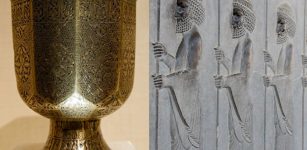 Cup Of Jamshid – Holy Grail Of Ancient Persia Offered Immortality And Visions Of The Future
Featured Stories | Jan 16, 2019
Cup Of Jamshid – Holy Grail Of Ancient Persia Offered Immortality And Visions Of The Future
Featured Stories | Jan 16, 2019

